This content is also available in:
English
Español
Čeština
Polski
Türkçe
Számos jelet értékelünk a keneten:
- A sejtek tipusát ( thyreocyta, makrofág, lymphocyta )
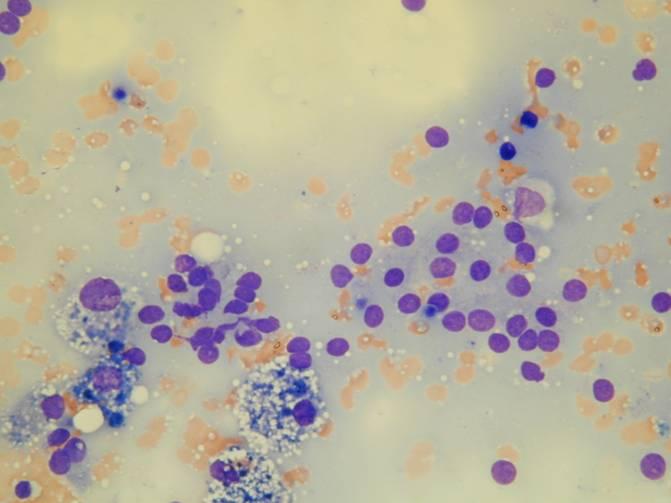
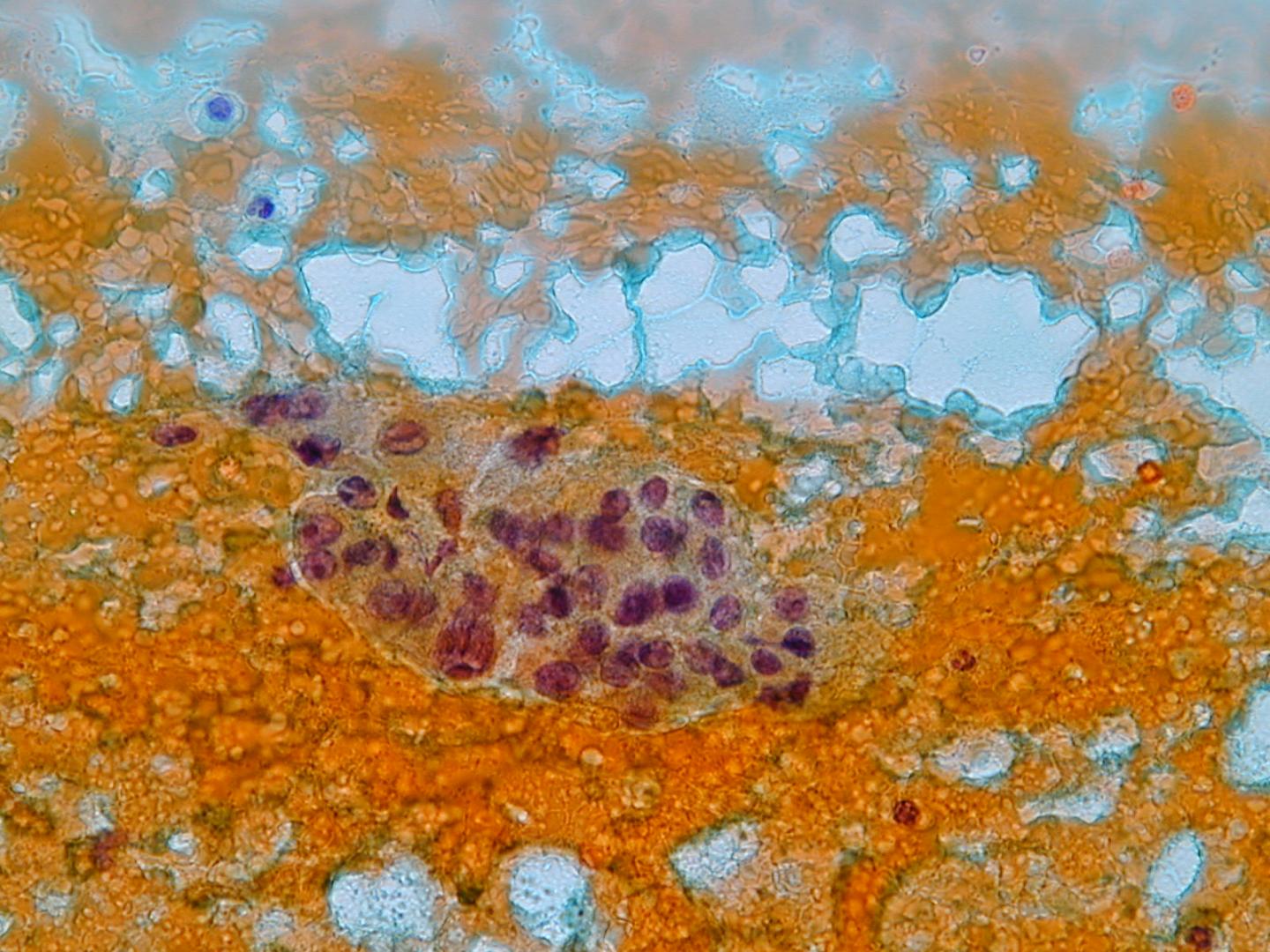
- A colloid mennyisége és tipusa( kevés, sok, folyékony, sürü)

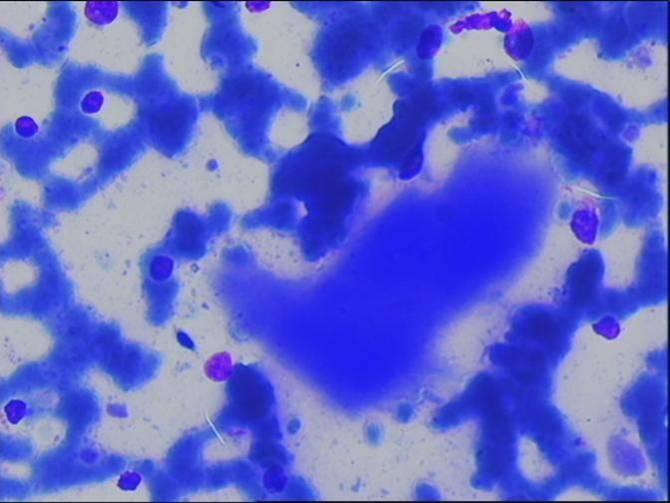
- Sejtgazdagság ( sejtszegény, elegend? sejt, sejzgazdag )
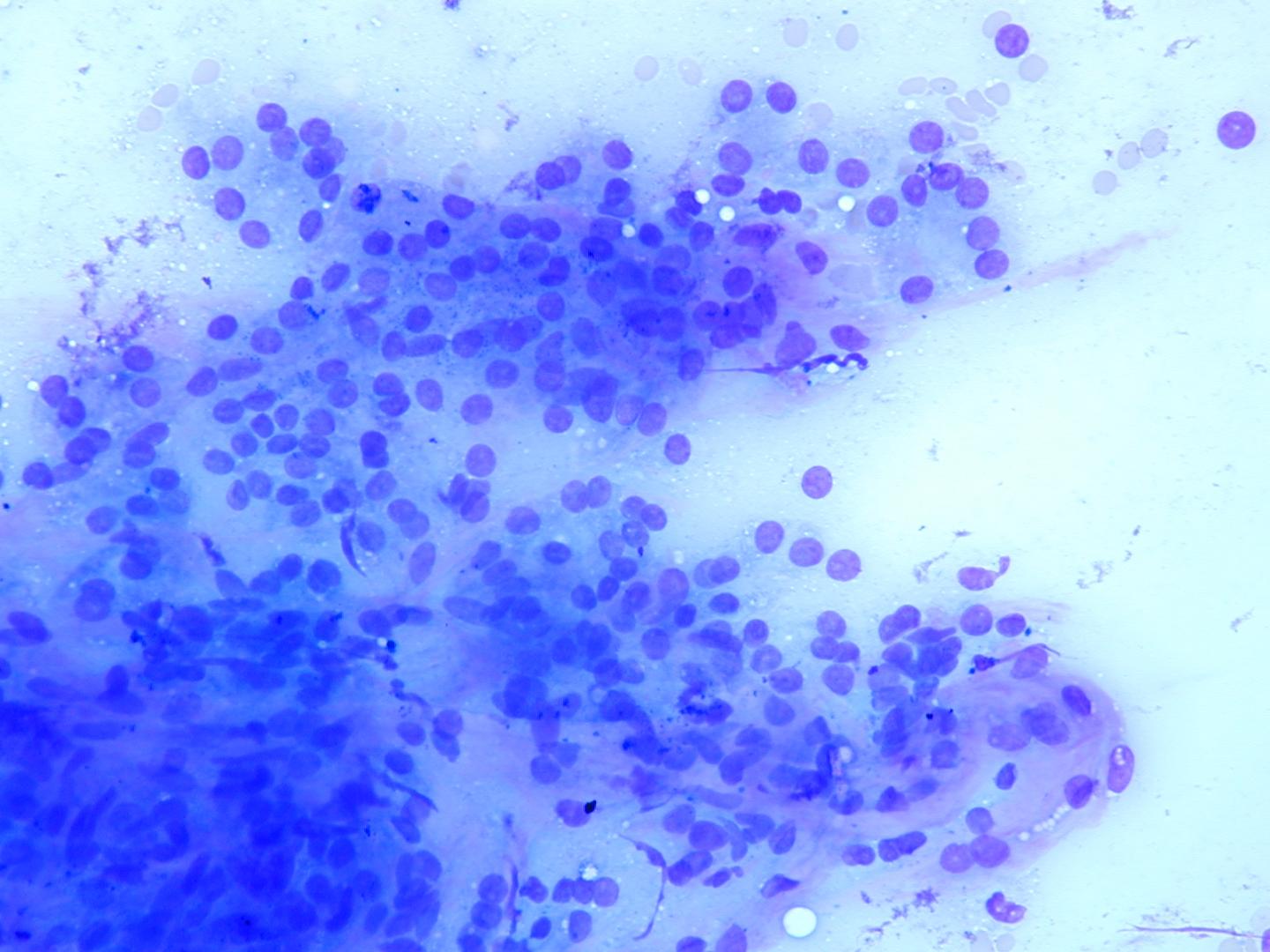

- Architektura (monolayer, sejtgazdag lemezek, csoportok, makro/mikrofollikulusok, papilláris lemezek, egyesével látható sejtek)
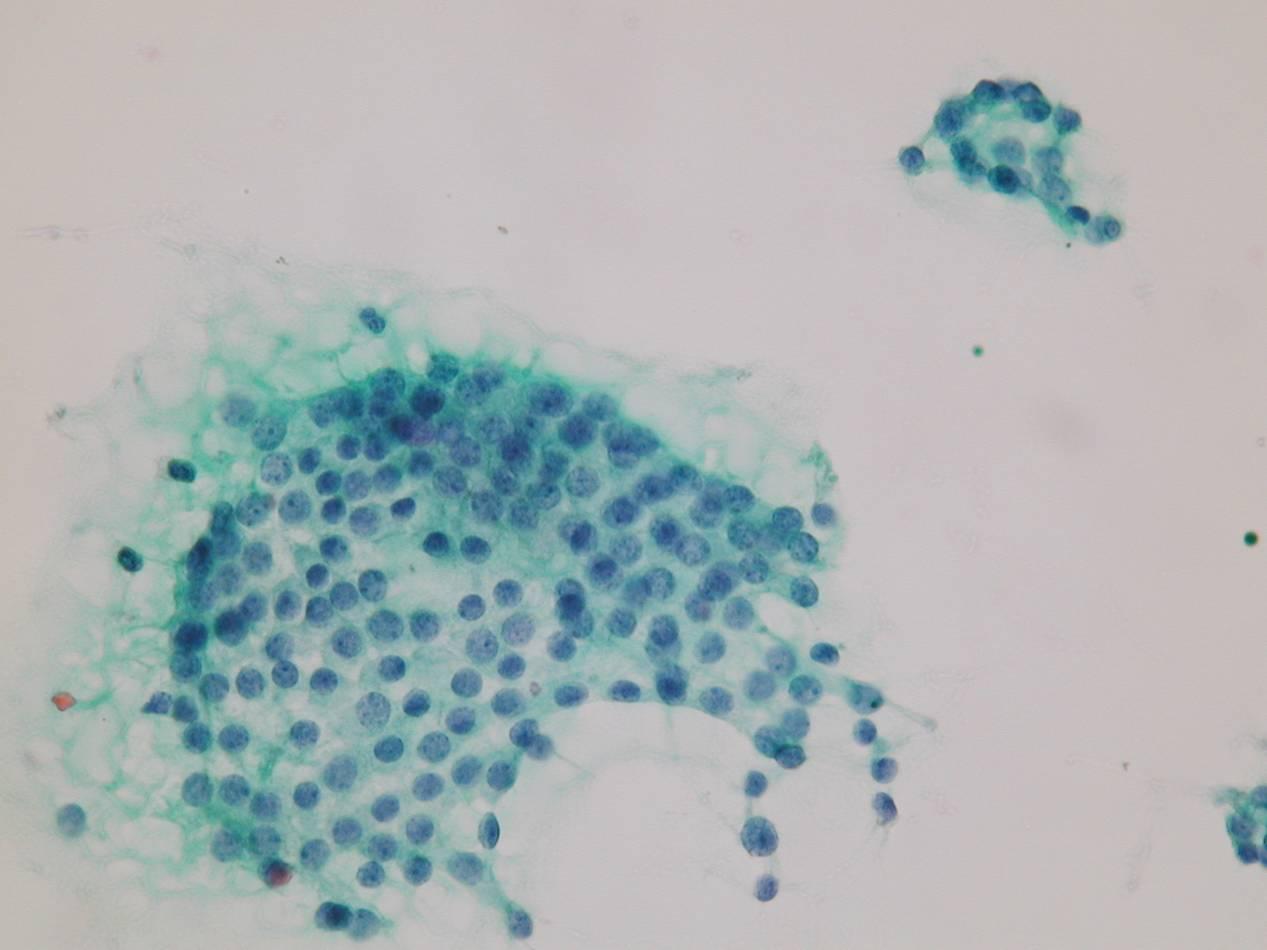

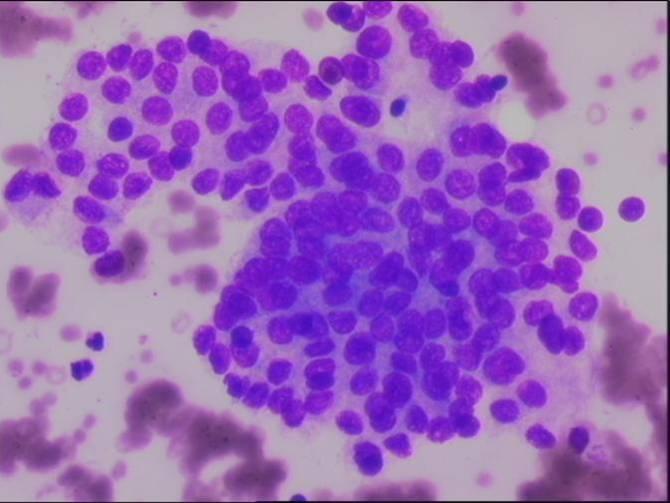

Csupasz magvak jelenléte

Citológiai jelek (cytoplazma, mag)
Daganatos kenetek általában sejtgazdagok. Lapos lemezek gyakran láthatók strumában és makrofollikláris adenomában, néha azonban rák esetén is jelen vannak. Makrofollikulusokat multinoduláris strumában és makrofollikuláris adenomában látunk. Mikrofollikulusok jelenléte follikuláris neopláziára utalhat. Papilláris lemezek, melyekben köt?szövetes tenely is van, papilláris rákot sugallnak Azon kenet, melyekben sok a colloid és a follikuláris sejt, általában benignus göbb?l származnak.
Citológiai jelenségek:
- citoplazma ( mennyiség, fest?dés )
- kromatin mintázat
- mag membrane ( sima, szabálytalan..)
- maghasadékok ( grooving ) és pseudoinkluziók



